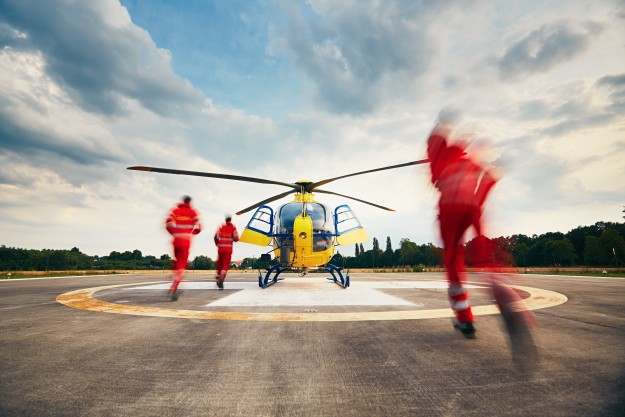The devastating wake of hurricanes across the United States and Caribbean. Two destructive earthquakes striking central Mexico within a two-week span. Deadly outbreaks of Middle East Respiratory Syndrome across Saudi Arabia, UAE and other countries in the region. Multiple terrorist attacks in Spain.
These are real examples of recent emergencies affecting all corners of the globe. Disaster and disease are not new, of course, but globalization amplifies their prevalence and extends their consequences.
As Pamela discussed in a previous post, the world is increasingly interconnected with steady flows of people and products, information and ideas. This has had negative health effects tied to issues such as contaminated air and waterways, greater risks of explosions and biocontamination, and faster and farther spread of disease.
Fortunately, globalization also benefits our health, especially in the expanded practice of disaster preparedness and emergency medicine. Disaster preparedness is a continuous cycle of planning, training, equipping and evaluating to ensure we respond effectively to a critical incident. Preparing for any disaster requires a strong emergency medical services (EMS) role.
Global EMS Landscape
As Johns Hopkins Medicine International began to operate to improve health globally two decades ago, our affiliates told us they wanted to better prepare for the impact disasters can have on their patients and organizations. We teamed up to develop practical ways to anticipate the worst and to put systems in place that work locally during any kind of emergency.
Emergency responders across the United States have had to continuously assess and alter our own disaster planning—too often in response to devastating events like 9/11 or the mass shooting in Las Vegas. As we began EMS work with our affiliates, our Johns Hopkins experts had a wealth of case studies and firsthand experience to draw from and share.
One challenge they found is that our affiliates often operate in countries where the various emergency medicine components are organized and funded by different government ministries or agencies. For example, the police may control alarm and dispatch functions; the fire department may control pre-hospital care functions; and that country’s ministry of health may control the hospitals’ emergency departments. This kind of fragmented organization can lead to wasted time—even lives lost.
We work with our affiliated health systems to help centralize these aspects of emergency medicine and disaster services. We also collaborate to train emergency department staff who treat trauma patients, develop processes to streamline dispatch, improve patient transport, and increase education for paramedics and other front-line caregivers.
Increasing Readiness
As part of our work with Al Rahba Hospital in the UAE, we led a disaster drill in which hospital employees reacted to a scenario of a multivehicle motor crash that brought in 60 volunteers playing the roles of injured patients and family members. The exercise looked at the hospital’s emergency notification system, its ability to evaluate and prioritize patient care, and its operating room’s capacity, among other critical areas. After the drills, we assessed the hospital’s response.
At Pacífica Salud Hospital Punta Pacífica in Panama, we recently facilitated hospital-wide drills simulating a baby abduction, a chemical spill and the spread of a global epidemic. We focused on creating processes for the hospital’s newly opened Pediatric Emergency Department, which included reviewing architectural design, required equipment, triage, ongoing education and overall infrastructure to ensure 24-hour services that align with standards of quality.
Our partner Johns Hopkins Aramco Healthcare (JHAH) provides 24/7 medical services to 55,000 employees of the energy giant Saudi Aramco. In the high-hazard oil and gas industry, emergency response isn’t an “if” but a “when,” so we have worked with JHAH from the very beginning of our joint venture to ensure the highest level of emergency preparedness, deliver pre-hospital care in a timely manner, and operate efficient emergency and urgent-care facilities.
So, despite globalization’s negative impacts on exposure and vulnerability to disaster, the process also has helped shape new emergency risk management opportunities. Just as the impact of disasters is no longer confined to the community or country where it occurred, emergency physicians are now inspired to look beyond their national borders to examine how emergency medicine is practiced elsewhere.
At JHI, we share best practices forged by real threats and then work with our affiliates to enhance their disaster response processes. The goal is to build collaborations that strengthen resilience against the effects of disaster at the local level—for the global good.
